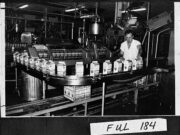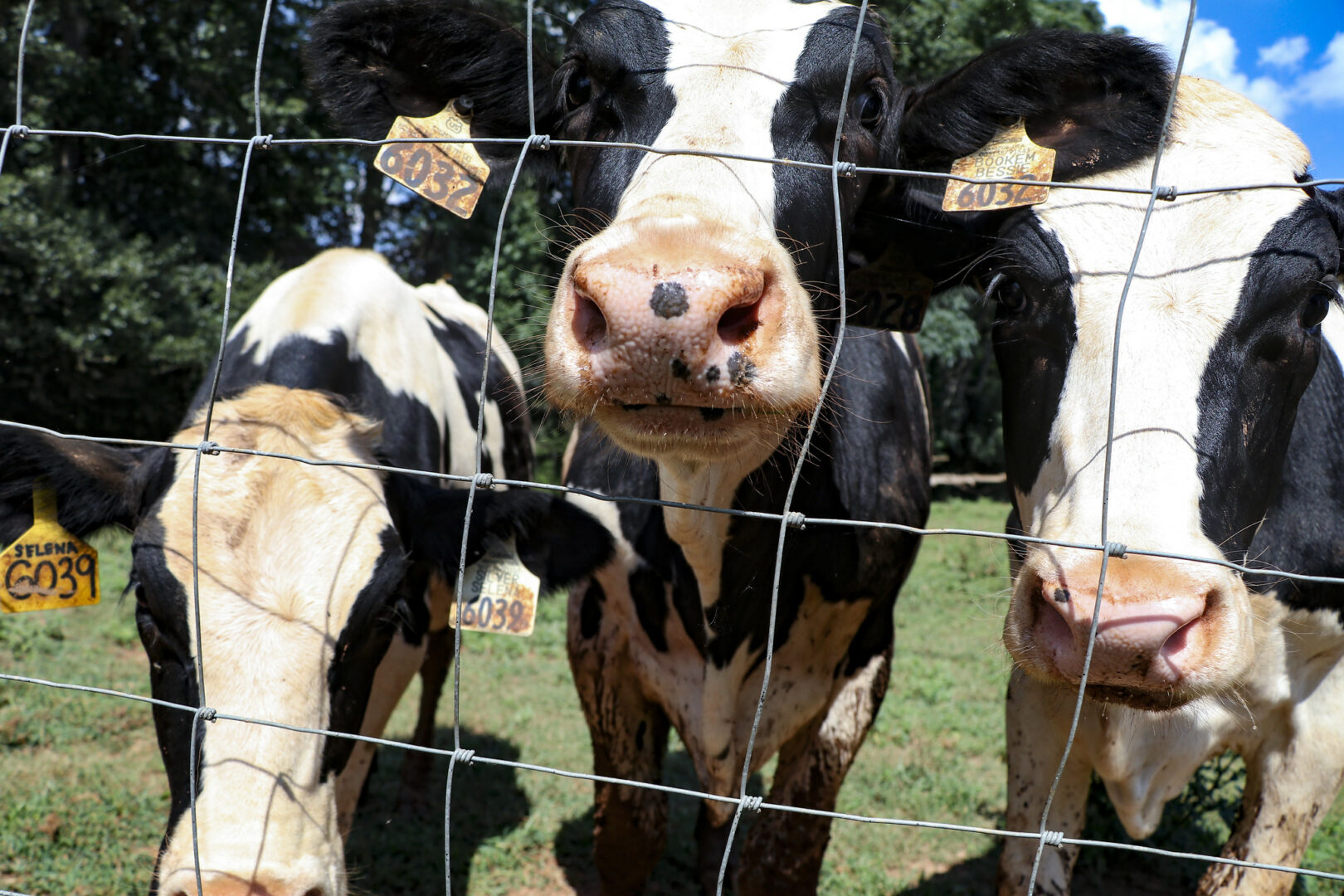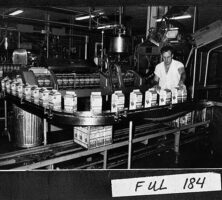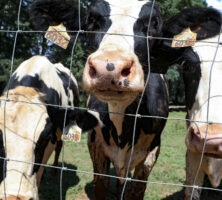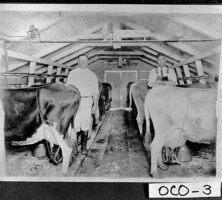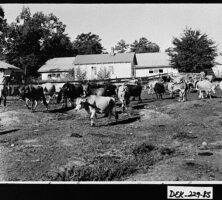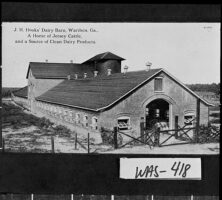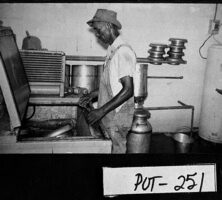The first dairy cows arrived in Georgia with James Edward Oglethorpe, the founder of the colony, in the early 1700s. By the 1930s the dairy industry had gained success as a commercial enterprise in Georgia and has been a primary industry in the state ever since. In 2000 the value of the Georgia dairy industry to the state (including milk, cull cows, and bull calves) was $254 million.
Early History
Little is known about the earliest period of dairying in Georgia because acquiring milk was primarily a local enterprise, left to individual families. A family that produced excess dairy products—butter, cream, cottage cheese, or cheese—would trade or sell the products to neighbors. Eventually, some farmers acquired an extra dairy cow or two for the purpose of producing dairy products to sell. As demand grew, such herds increased to five to ten cows. Farmers processed and distributed their own milk for sale.
The number of cows in Georgia, as well as the price per head of cow, fluctuated during the antebellum period. One reason for the fluctuations, at least until the 1820s, may have been Indian raids on livestock herds in settled areas.

Courtesy of Explore Georgia.
The dairy industry slowly expanded as the population of the colony increased and spread inland from the coast. After the Civil War (1861-65) the demand for milk products grew. Cows were pastured and milked by hand. Milk was cooled in cans in water tanks filled with spring or well water. (Milk was considered adequately cool at a temperature of 50 degrees Fahrenheit.) The dairies closest to communities produced fluid milk for the town’s population. The dairy farmers were producer-processors, as they produced the milk with their small dairy herds, bottled the milk, and delivered it to their customers. Dairy farms located farther away from the towns produced cream or butter, which could be stored longer and transported more easily than fluid milk.
In 1876 Benjamin Hunt, a banker and expert in horticulture and animal husbandry, brought a herd of Jersey cows to Putnam County and opened Panola Farm, an experimental dairy facility. He is credited with establishing the dairy industry in that county.
Early Twentieth Century
The 1920s were a period of great change in the dairy industry. The introduction of the automobile and the truck allowed milk to be transported across greater distances, and farms farther from population centers thus had new markets for their milk. Tractors replaced horses and mules as power sources on the farm; consequently more acreage and crops were available to be sold or to support dairy cows instead of supplying feed for horses and mules. The introduction of electricity and the milking machine allowed more cows to be milked by one person with less effort. Each pail of milk was strained and placed in electrical coolers. Mechanical refrigeration cooled milk more efficiently and maintained its freshness longer. All of these advances led to a rise in the number of dairy farms and dairy cows in the state of Georgia as well as in the United States. At the same time, the Great Depression of the 1930s caused decreasing farm prices. Part of farmers’ attraction to dairying during the depression was that it provided steady income over time.
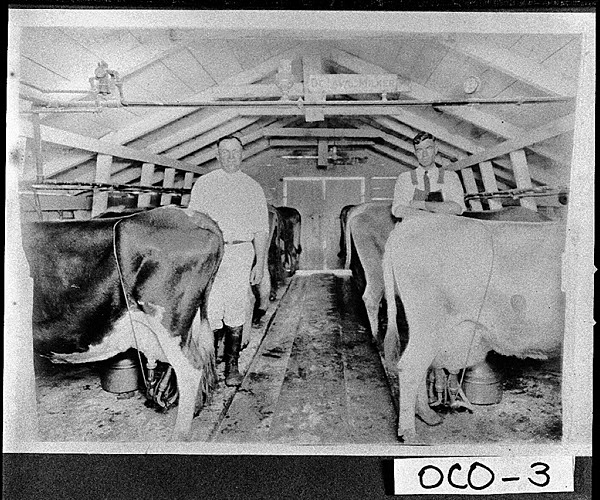
Courtesy of Georgia Archives.
From about 1867 to 1919 the number of dairy cows in Georgia increased from about 20,000 head to 411,000 head, with an average price per cow of $16. In 1920 the average price per cow increased to $65. At this time dairy farmers were typically still producer-processors who owned fifteen to twenty-five cows apiece. Following a decline in the dairy herd after World War I (1917-18) that lasted through the early years of the depression, Georgia’s dairy herd grew once again to a high of 419,000 head in 1935, and the price per cow fluctuated until World War II (1941-45), when it began to increase rapidly. In 1945 dairy cows in Georgia numbered about 360,000 head. By 1953 cows were valued at an average of $138 per head.
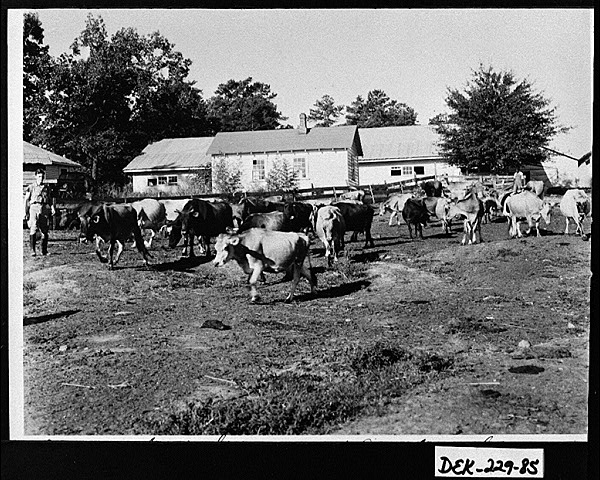
Courtesy of Georgia Archives.
Pasteurization and Sanitation
As milk production became industrialized, sanitation became a more critical issue. The French scientist Louis Pasteur’s experiments in the 1860s with heating milk to destroy bacteria generated great interest in milk’s health aspects, and studies showed that milk could be a source of such human diseases as diphtheria, typhoid fever, tuberculosis, undulant fever, and pox. Nevertheless, there was much resistance to the pasteurization of milk because of its expense. In 1923 the U.S. Congress passed the Pasteurized Milk Ordinance (PMO), which required that all milk shipped between states be pasteurized. Milk sold within a state was not covered by the PMO and was regulated by each individual state. This law (with revisions over the years) still governs the sale of milk in the United States. In Georgia pasteurization was not required, but inspections of producers selling milk were conducted by the state department of agriculture in Atlanta. Many county health departments around the state shipped milk samples there by railroad. The inspectors were most concerned about unsanitary milking machines; there was a great deal of bacteria in the milk because in many cases water around the dairies was contaminated by nearby outhouses.
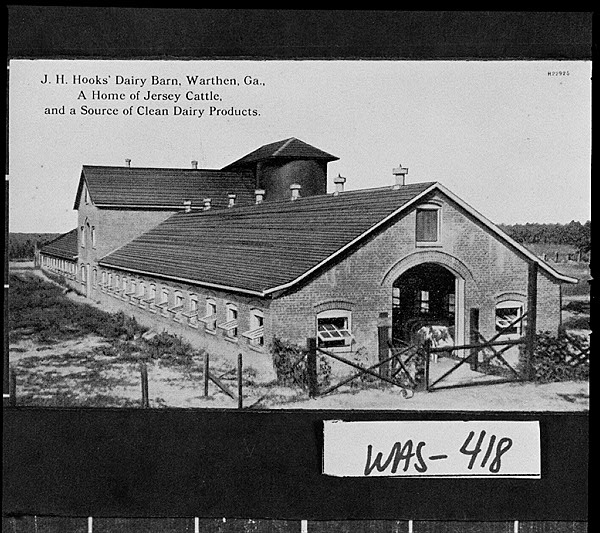
Courtesy of Georgia Archives.
In 1943 the state legislature finally passed a law requiring all milk to be pasteurized. Since World War II was still being fought and there was a shortage of equipment, producers and processors were given a three-year period to comply. In 1950 the Interstate Milk Shippers Agreement took effect. All states were members of this agreement, which prevented multiple inspections of milk as it was transported from state to state.
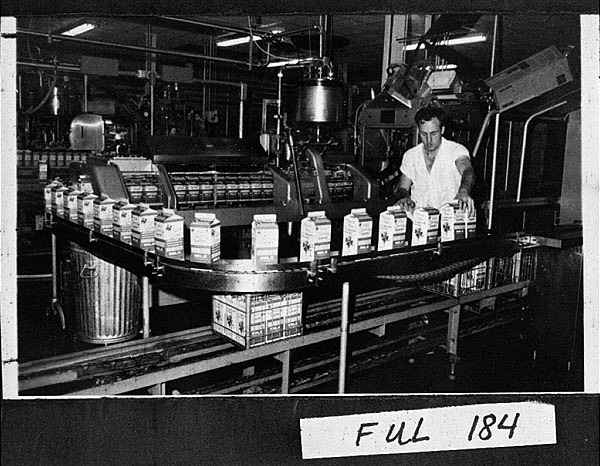
Courtesy of Georgia Archives.
After World War II the Georgia Department of Public Health purchased a used house trailer and transformed it into a mobile milk laboratory. The first area that benefited from the mobile lab was Cobb County. During the approximately sixty days that the lab stayed in each area, state and county personnel inspected each dairy producer and milk plant. Samples were taken from each dairy and examined thoroughly. The milk producers became conscious of the need for better sanitary practices and were made aware of the quality of their milk. Milk producers were given a grade for their milk. “A” was the highest grade, and “C” was the lowest.
In the 1950s milking equipment and the cooling and transportation of milk were improved. Pipeline milking was introduced during this time. Each cow’s milk was conveyed through a glass or stainless-steel pipeline by vacuum into the milk house, where it was released directly into a farm bulk tank. Each tank was capable of holding from 150 to 1,000 gallons of milk. Milk in the tanks was cooled to below 40 degrees Fahrenheit in about one hour. Pipeline milkers were designed to be easily cleaned, which promoted sanitation. Tanker trucks hauled up to 5,000 gallons of milk to processing plants. One truck could serve from three to ten milk producers. Because of these new technologies, the policy of a “one-week shelf life” was introduced in retail outlets. In time both the state regulatory agencies and a cooperating milk industry ensured a safe and reliable source of milk for Georgia’s citizens.
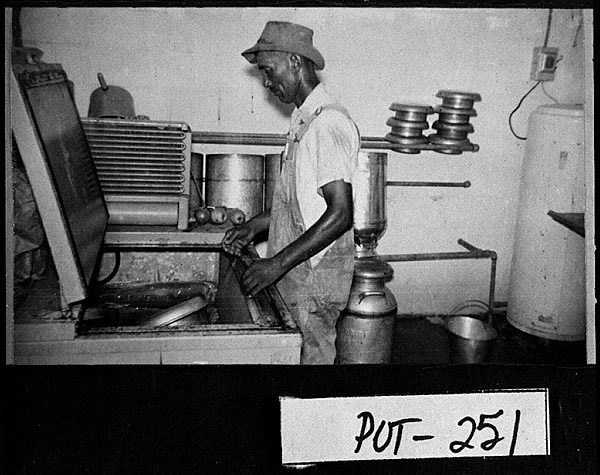
Courtesy of Georgia Archives.
The pipeline milking system and bulk tanks replaced the bucket milkers and milk cans on dairy farms in the 1960s. The introduction of silos and silage replaced pasture, and better highways and trucks meant that milk and dairy products could be transported further and faster. An effort to control mastitis, a bacterial disease found in dairy cows, also began in the 1960s. This benefited both the public and the owners of milking herds. In 1965 federal and state milk regulations established a maximum of somatic cells, which produce mastitis, for grade A milk.
Cooperatives
In the wake of the Georgia pasteurization law, producer-processors had a choice—they could stop producing milk, buy the expensive equipment to pasteurize, or form or join a cooperative that would collect the farmer’s milk, pasteurize it, and sell it. Only a few cooperatives, namely Wells Dairies Cooperative in Columbus and Athens Cooperative Creamery in Athens, operated in the state during the 1940s. The large group of producers that supplied the Atlanta market decided to form a cooperative that became Atlanta Dairies. They purchased land, built a processing plant, and acquired trucks to haul the milk cows from the farm to the plant. The plant and cooperative are still operating today under different names.
In the 1960s dairy farmer cooperatives grew and began helping dairy farmers earn better prices for their milk. Some of the most significant cooperatives in the state were Atlanta Dairies, Athens Cooperative, Miss Georgia Cooperative, South Georgia Cooperative, and Well Dairies Cooperative.
In 1970 a cooperative known as Dairymen was formed from a collection of new and large cooperatives in Georgia. Dairymen was primarily a marketing agency for milk producers, and with its formation about 90 percent of all milk in the state was marketed through dairy cooperatives. This improved the sanitary quality, flavor, and shelf life of grade A milk. In 1972 the Georgia General Assembly returned all responsibility for milk sanitation and safety to a single state agency—the Georgia Department of Agriculture.
Twenty-first Century
In 1945 every county in Georgia had at least one dairy farm, for a total of 6,040 farms with 360,000 cows producing approximately 1 billion pounds of milk (3,150 pounds of milk per cow) annually. The greatest number and concentration of dairies were in the counties surrounding Atlanta and in northwest Georgia. Since then, the number of dairy farms and cows has steadily declined, but milk production has increased. In 2005 there were 313 dairies in Georgia with 81,000 cows producing approximately 1.4 billion pounds of milk (17,259 pounds of milk per cow). Today, 50 percent of all milk production in Georgia occurs in south Georgia.
Several factors contributed to these changes in the industry. The dairy farms around Atlanta and other cities were sold for housing as population increased. Many people in farming communities left agriculture to pursue other job opportunities. Technology advanced so that larger farms could be efficiently operated. Through genetics and management techniques introduced in the last decades of the twentieth century, dairy cows have increased their production dramatically, so fewer cows are needed to produce a comparable supply of dairy products.
A few dairy farmers in south Georgia implement sustainable agriculture practices. The owners of Sweet Grass Dairy in Thomasville, for instance, abandoned conventional dairy farming in 1993 in favor of a “rotational grazing” approach, the method used by farmers in New Zealand. Sweet Grass also produces artisanal cheeses made from cow’s milk and goat’s milk, which have won national awards.
According to industry experts, projections for Georgia through 2020 show a continued decline in milk production. Georgia, along with most other southeastern states, is a milk-deficit state, meaning it does not produce enough milk to supply its own population. As of 2006 the state produces less than 300 pounds per capita, while the nation’s average is 581 pounds per capita. Ironically, about 40 percent of Georgia’s milk is shipped to Florida, with Georgia’s needs being met by milk shipped from other states. As of 2006 nine companies are involved in the processing of milk and milk products in Georgia.


